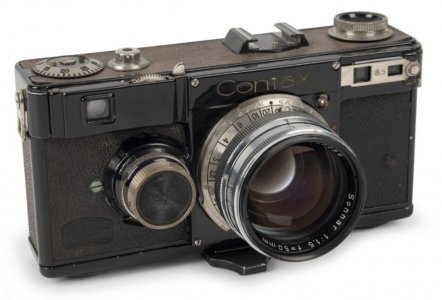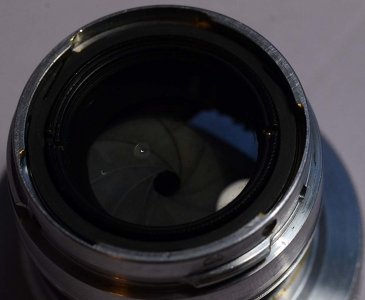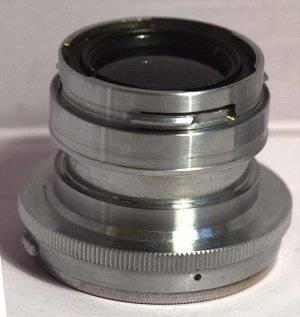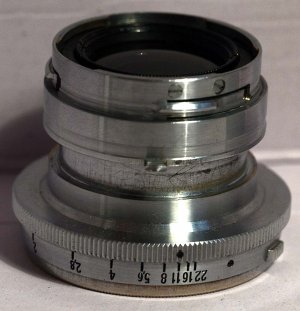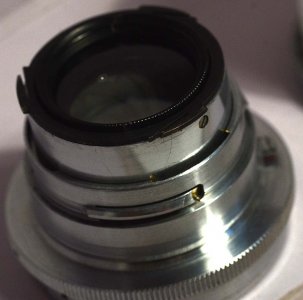Serial number 2866401 shows up in Thiele's book of CZJ lens production as part of a batch of 1500 9cm f1.9 lenses, range of numbers is 2866201 to 2867700, batch completed Oct 16 1945. The lens mount appears to be taken from a Leica lens; the barrel does not resemble any of the other LTM Sonnars in other threads on this site. The ears on the aperture have 7 small vertical lines, which generally indicates an irregular production Sonnar, probably made by someone who worked for CZJ, but not typical factory production. An interesting lens. How does it perform?
Hello TenEleven, Dexdog and Rauber - many thanks for your prompt, generous and thoughtful replies, which are most appreciated.
I find the history of the lens and camera manufacturers fascinating, particularly through the WWII period and the subsequent poaching of German lens and camera technology by the USSR. If this little lens is indeed a 'Bitsa' orphan of unknown heritage, to me it is emblematic of those years. ('Bitsa' is an Australian term for a dog of mixed pedigree: 'bits of this, bits of that').
I will need to take and post detailed photos of the lens. I hope to do that next week.
As I think you are aware, the lens was part of an auction of a privately operated camera museum. The museum was established by the family that owned a camera store in Melbourne, Australia since 1916. The auction house described the manufacture date of the lens as 'around 1942'. I note that doesn't align with the observations above. Once I post the photos for comment and if it is considered worthwhile, I could try and make further inquiries about the provenance via the auction house to the family. I note that the auction I participated in was the third of three auctions spanning about 4 years. There were only about a dozen or two Zeiss lots offered across the auctions and only a few Sonnar f1.5 lenses within these. A photo of one of the others f1.5 is attached (from the second auction). By way of contrast, in the first auction alone there were 199 Leica auction lots. So it intrigues me as to why the family decided to acquire and keep the Bitsa 5cm f1.5. My assumption is it is because it was deemed unusual, or, as it has been politely described, a unique transition lens.
I haven't used the lens yet. I don't have a M39 Leica camera, but I do have a Zorki 4K (from the same auction, which I haven't tested). I note that if the lens' M39 mount is a genuine Leica/LMT part then the Zorki's mount might not be perfectly compatible with the Sonnar.
I have a Leica LTM to M mount adapter as I had intended to use the Sonnar lens adapted to my M3. But the M3 requires a CLA and new shutter so unfortunately that won't be an option in the short term.
I might have a LTM M39 to MFT adapter somewhere. My MFT camera obviously won't provide full visibility of the lens quality but unfortunately I don't own a FF mirrorless camera, only a Canon 5DIII. I note longer flange distance of the EF mount won't allow the lens to focus to infinity, but it should operate as a short focus macro... if I can find an adapter (or combination of adapters) to mount it.
I would welcome any further comments and suggestions you might have. Thank you again.



